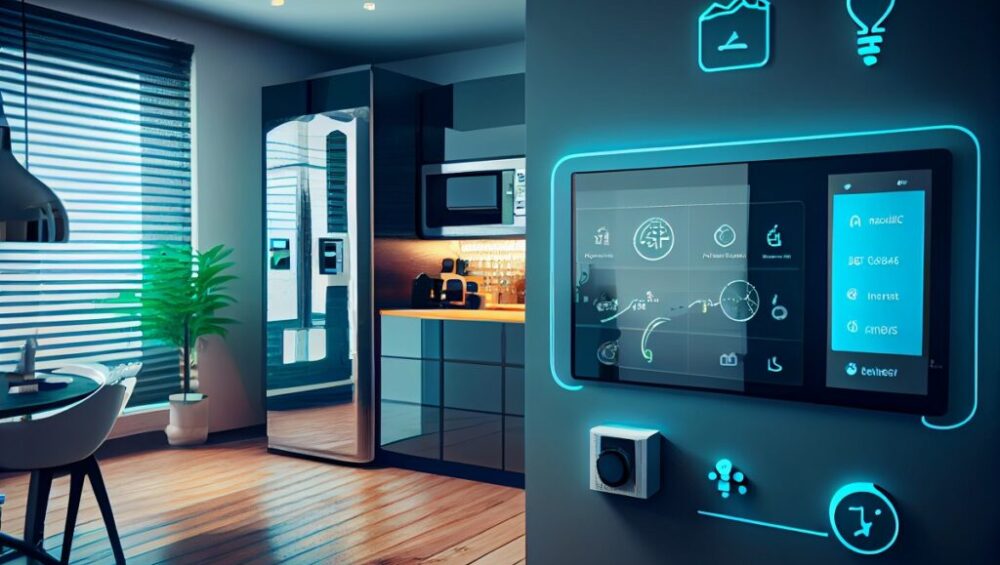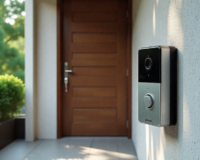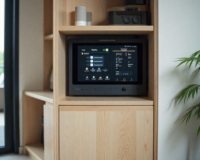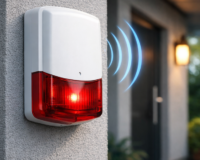In the modern world, where technology permeates every aspect of our lives, home automation systems have emerged as a powerful tool for enhancing convenience, security, and energy efficiency. These systems allow homeowners to control various aspects of their homes remotely and automatically, making it easier than ever to reduce energy consumption and save on utility bills. In this article, we will explore various tips and strategies to save energy using home automation systems.
Understanding Home Automation
Before diving into the specific tips, it’s essential to understand what home automation systems are and how they work. Home automation involves the use of smart devices and systems that can be controlled remotely via smartphones, tablets, or computers. These systems often include smart thermostats, lighting controls, smart plugs, security systems, and more. By automating and optimizing the operation of these devices, homeowners can achieve significant energy savings.
Smart Thermostats
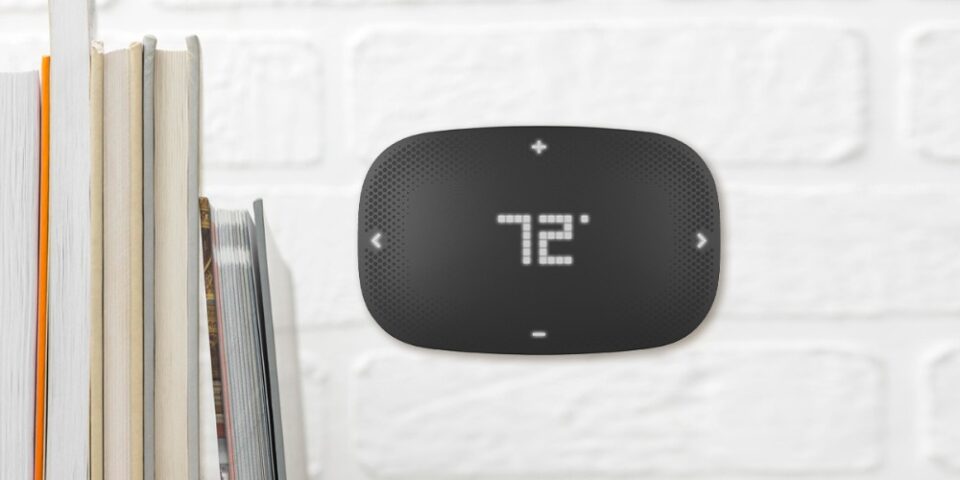
One of the most effective ways to save energy with home automation is by using a smart thermostat. These devices learn your schedule and preferences, adjusting the temperature accordingly to ensure comfort while minimizing energy use. Here are some tips for maximizing energy savings with a smart thermostat:
- Set Optimal Temperature Ranges: Program your thermostat to maintain energy-efficient temperature ranges when you are at home, away, or asleep. For instance, set the thermostat to lower the temperature in winter and raise it in summer when the house is unoccupied.
- Use Geofencing: Many smart thermostats offer geofencing capabilities, which use your smartphone’s location to determine if you are home or away. This allows the thermostat to automatically adjust the temperature when you leave or return, saving energy without any manual intervention.
- Schedule Regular Adjustments: Take advantage of scheduling features to automatically adjust the temperature based on your daily routine. For example, set the thermostat to lower the heating or cooling during the night and raise it shortly before you wake up.
- Monitor Energy Usage: Use the thermostat’s energy usage reports to track your consumption patterns and identify areas where you can make further adjustments to save energy.
Read more: Top Smart Thermostats of 2024
Smart Lighting
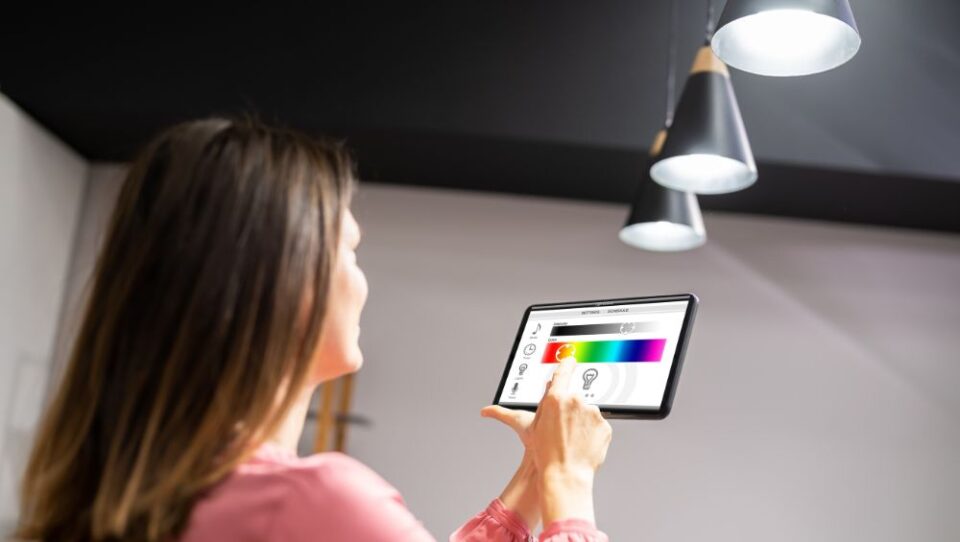
Lighting accounts for a significant portion of household energy consumption. Smart lighting systems allow you to control your lights remotely, set schedules, and even automate their operation based on occupancy or natural light levels. Here are some tips for saving energy with smart lighting:
- Use LED Bulbs: Replace traditional incandescent bulbs with energy-efficient LED bulbs. LEDs consume significantly less energy and have a longer lifespan, reducing both energy costs and the frequency of bulb replacements.
- Implement Motion Sensors: Install motion sensors in high-traffic areas such as hallways, bathrooms, and kitchens. These sensors automatically turn lights on when someone enters the room and off when the room is unoccupied, preventing energy waste.
- Schedule Lighting: Use your home automation system to schedule lights to turn on and off at specific times. This is particularly useful for outdoor lighting, which can be programmed to operate only during the hours of darkness.
- Dimmer Controls: Use dimmable smart bulbs and switches to adjust the brightness of your lights. Lowering the brightness can reduce energy consumption and create a more comfortable ambiance.
- Natural Light Utilization: Maximize the use of natural light by integrating smart blinds or shades. These can be programmed to open during the day to let in sunlight and close at night to retain heat, reducing the need for artificial lighting and heating.
Read more: Control Your Lights via Home Automation and Smart Switches
Smart Plugs and Power Strips
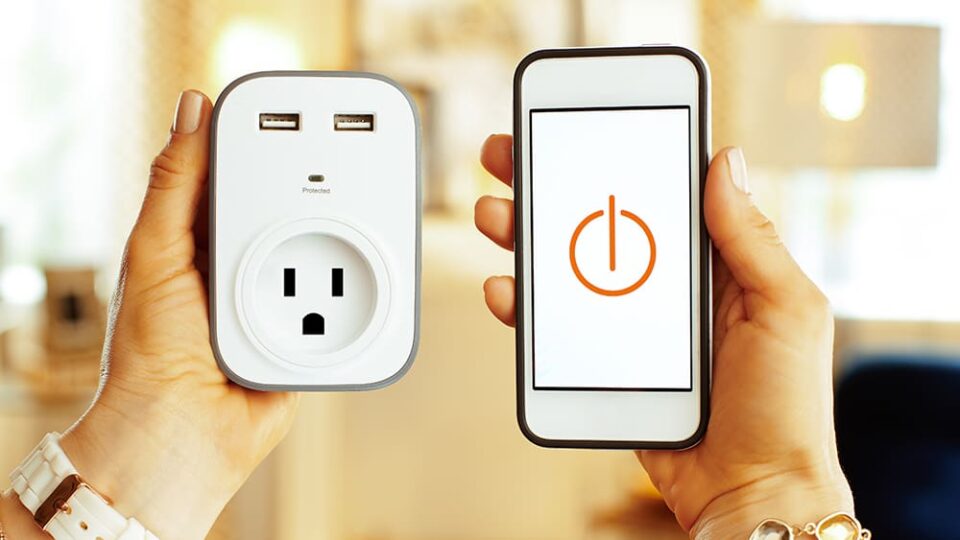
Smart plugs and power strips can help you manage the energy consumption of various household appliances and electronics. Here are some ways to use them effectively:
- Remote Control: Use smart plugs to remotely turn off appliances and electronics when they are not in use. This is especially useful for devices that consume power even when in standby mode, such as TVs and gaming consoles.
- Schedule Power Cycles: Set schedules for smart plugs to turn devices on and off at specific times. For example, you can program your coffee maker to turn on in the morning and off after you leave for work.
- Monitor Energy Usage: Many smart plugs come with energy monitoring features that provide insights into the power consumption of connected devices. Use this information to identify energy hogs and make informed decisions about their use.
- Grouping Devices: Group multiple devices on a single smart power strip to control them simultaneously. This can be particularly useful for home entertainment systems, allowing you to turn off all connected devices with a single command.
Smart Appliances
Modern smart appliances are designed to be more energy-efficient and can be integrated into your home automation system for enhanced control. Here are some tips for using smart appliances to save energy:
- Energy-Efficient Models: When purchasing new appliances, look for models with the ENERGY STAR label or other energy efficiency certifications. These appliances are designed to consume less energy while delivering the same performance.
- Remote Operation: Use your home automation system to remotely control and monitor your smart appliances. For instance, you can start your washing machine or dishwasher during off-peak hours when energy rates are lower.
- Energy Usage Alerts: Some smart appliances can send alerts when they detect abnormal energy usage. These alerts can help you identify and address issues before they lead to higher energy bills.
- Maintenance Reminders: Regular maintenance is crucial for keeping appliances running efficiently. Many smart appliances provide maintenance reminders, such as filter replacement alerts for HVAC systems or defrosting notifications for refrigerators, ensuring optimal performance and energy efficiency.
Home Security Systems

Home security systems can also contribute to energy savings when integrated with home automation. Here are some tips:
- Smart Locks and Sensors: Use smart locks and door/window sensors to automate lighting and HVAC systems. For example, the system can turn off lights and adjust the thermostat when doors and windows are locked, indicating that no one is home.
- Security Camera Automation: Integrate security cameras with your lighting system to turn on lights when motion is detected. This not only enhances security but also ensures that lights are only used when necessary.
- Energy-Efficient Surveillance: Choose energy-efficient security cameras and sensors that consume less power. Solar-powered options are also available for outdoor security systems.
Water Heating and Conservation
Water heating is another significant contributor to household energy consumption. Smart home automation can help reduce water heating costs and promote water conservation:
- Smart Water Heaters: Install a smart water heater that can be programmed to heat water only when needed. You can schedule it to operate during off-peak hours or when you are most likely to use hot water.
- Water Leak Sensors: Use smart water leak sensors to detect leaks and prevent water waste. These sensors can alert you to potential issues before they become major problems, saving both water and energy.
- Remote Temperature Control: Adjust the water heater temperature remotely to ensure it is not set higher than necessary. Lowering the temperature by a few degrees can result in significant energy savings.
Heating, Ventilation, and Air Conditioning (HVAC) Systems

HVAC systems are among the largest energy consumers in any home. Optimizing their operation through home automation can lead to substantial energy savings:
- Regular Maintenance: Ensure your HVAC system is well-maintained by scheduling regular service checks. Clean filters, ducts, and vents to improve efficiency and reduce energy consumption.
- Zone Heating and Cooling: Use smart thermostats to create heating and cooling zones within your home. This allows you to condition only the rooms you are using, rather than the entire house.
- Ventilation Control: Automate ventilation systems to operate based on occupancy and indoor air quality. This ensures that ventilation is provided when needed, without wasting energy.
- Seasonal Adjustments: Adjust your HVAC settings seasonally. For example, set the thermostat to lower temperatures in the winter and higher temperatures in the summer when the house is unoccupied.
Renewable Energy Integration
Integrating renewable energy sources into your home automation system can further enhance energy savings and sustainability:
- Solar Panels: Install solar panels and integrate them with your home automation system. Use the system to monitor energy production and consumption, optimizing the use of solar energy.
- Energy Storage: Incorporate energy storage solutions, such as home batteries, to store excess solar energy. Use the stored energy during peak hours or when solar production is low, reducing reliance on the grid.
- Renewable Energy Management: Use home automation to manage the distribution of renewable energy within your home. Prioritize critical systems and appliances to ensure they receive power from renewable sources.
Conclusion
Home automation systems offer a powerful way to enhance energy efficiency, reduce utility bills, and promote sustainable living. By implementing smart thermostats, lighting controls, smart plugs, appliances, and integrating renewable energy sources, homeowners can achieve significant energy savings while enjoying the convenience and comfort of a connected home. The key to maximizing these benefits lies in understanding the capabilities of your home automation system and leveraging its features to create an energy-efficient living environment. As technology continues to evolve, the potential for energy savings through home automation will only increase, making it an essential tool for modern, eco-conscious homeowners.

